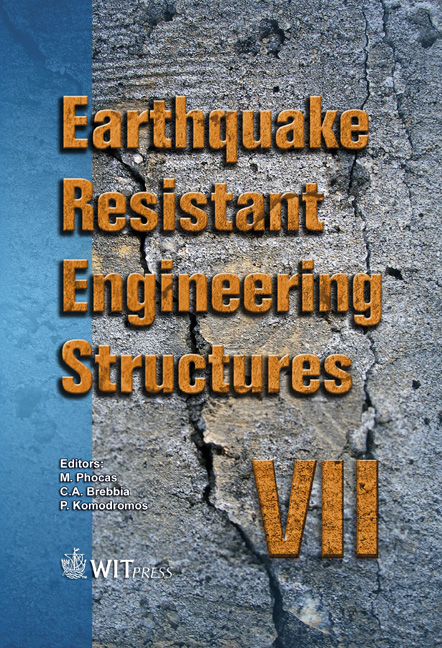Dual Earthquake Resistant Frames
Price
Free (open access)
Transaction
Volume
104
Pages
10
Page Range
165 - 174
Published
2009
Size
3,264 kb
Paper DOI
10.2495/ERES090151
Copyright
WIT Press
Author(s)
T. L. Sophocleous & M. C. Phocas
Abstract
Structural control through energy dissipation systems has been increasingly implemented internationally in recent years and has proven to be a most promising strategy for the earthquake safety of structures. In extending the \“classical” approach of the capacity design for earthquake structural resistance, the integration of passive damping devices within the structure aims at energy dissipation within specific structural zones. The present paper examines an alternative control system for achieving dynamic structural adaptability, which consists of an energy dissipation device and a cable bracing mechanism with a kinetic closed circuit, working only in tension. The closed bracing mechanism does not practically affect the initial stiffness of the system, i.e. the concept relies on two completely \“separate” systems: a primary for the vertical- and wind loads and a secondary for the earthquake loads. An additional feature of the bracingdamper mechanism compared to conventionally passively controlled systems is the contribution of all bracing members to the energy dissipation during a loading cycle. Three \“dual systems” with different configurations of the closed bracing mechanisms and damping devices are investigated in their dynamic behaviour, in the time-history range under actual earthquakes of the Greek- Mediterranean region. The study provides significant response comparisons of the dual systems, in respect to the stiffness of the hysteretic dampers, its effect on the base shear force and the maximum relative displacements of the systems and to the energy dissipation behaviour of the bracing-damper mechanism. Keywords: dual systems, hysteretic dampers, passive control. 1 Introduction Form, construction and energy efficiency of the structures in earthquake prone areas depend on the integration, from an early design stage, of those structural
Keywords
dual systems, hysteretic dampers, passive control.





